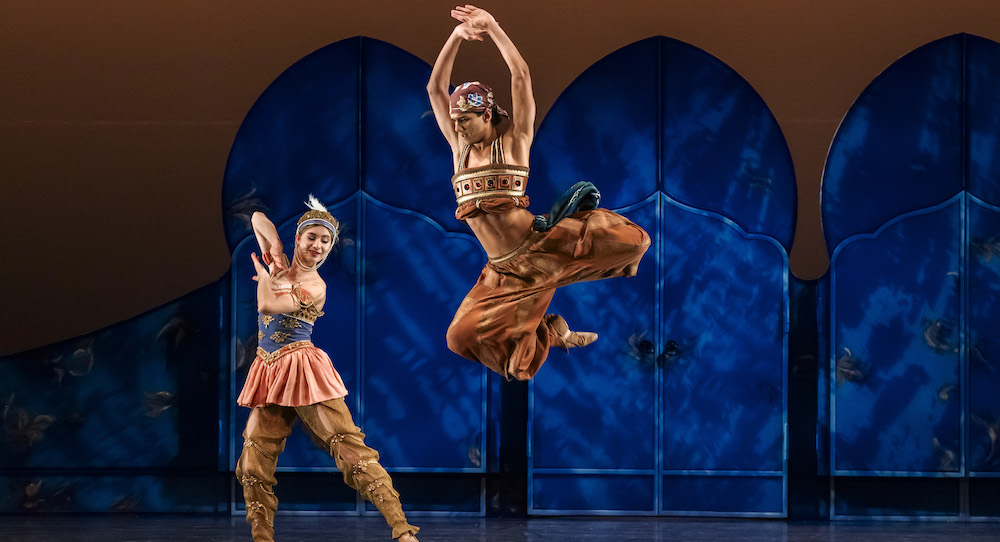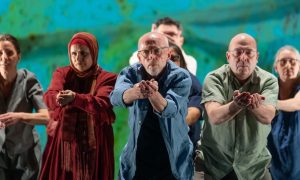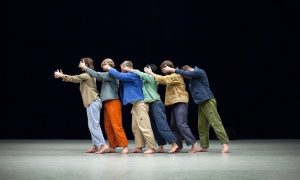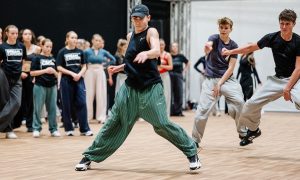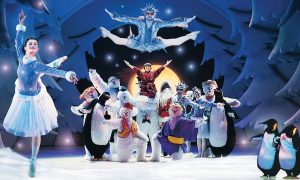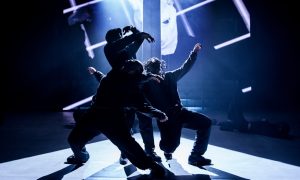Sadler’s Wells East, London.
10 May 2025.
It is with excitement that I head to Sadler’s Wells East this evening (although it is not the greatest journey via public transport) for Birmingham Royal Ballet 2 (BRB2) in Carlos Acosta’s Ballet Celebration: Diaghilev and the Birth of Modern Ballet. Having studied Serge Diaghilev and his Ballet Russes in the past, I am looking forward to watching his infamous repertoire delivered by ballet graduates in BRB2’s performance programme. It will be a ‘fresh’ contrast to all the new ballet choreography that I have viewed recently.
Before we begin, the programme is a treasure trove of information. Take on board as much as you wish, all historic reference and relevance is detailed here and it’s wonderful to read in depth about the pieces we are about to watch.
The first strains of Chopin’s piano music enter across a hushed audience as auditorium lights dim. Into darkness and the curtain rises on a beautiful tableau of dancers in traditional white romantic tutus, little wings adorning their backs. Immediately, luscious, soft and fluid arm movements epitomise this piece – Les Sylphides. There are slow rising arabesques, and plenty of the gorgeously emotive sound of pointe shoes rippling across the stage, playful in parallel at points throughout the choreography. As one of the first ‘plotless ballets’, first performed by Ballet Russes in 1909, and focussing on the beauty of the dance itself rather than narrative; the commitment to meaningful eyeline, head alignments and facial expressions really make this piece.
The corps de ballet part to make way for the Poet, danced by Tom Hazelby – and his Sylphs. He has the opportunity to show off his elevation in a solo about halfway through Les Sylphides; whilst the corps de ballet – arms linked – form another attractively pleasing still frame.
Three very different dancers have been cast as the three Sylphs in today’s performance. Standing out in the Mazurka with bright expression, and light, quick elevation and extension is Maïlène Katoch. The Poet also has a well-partnered engaging duet in Prelude, danced by Alisa Garkavenko, with some lovely choreographic movements.
Act Two opens with Shéhérazade, a piece that was considered racy in its time. Its themes are certainly unacceptable today, yet important to remember at the same time.
Today, we watch leading man Ixan Llorca Ferrer as the Golden Slave, first performed by Nijinsky in 1910. Llorca Ferrer bursts onto the stage this evening with fervour, energy and effortless height, partnered by Andrea Riolo as Zobeide who desires the slave. Interesting to note Zobeide was first performed by Ida Rubinstein – who was a theatrical performer, and not a dancer. A very challenging and overtly sensual and erotic pas de deux, and even more lust and desire between the two characters will inevitably develop as the tour continues.
Next in this cleverly structured Act is La Spectre de la Rose, in wild contrast to Shéhérazade. A slow, calm start as a young girl – danced by Charlotte Cohen – returns from a ball, holding a rose. She falls asleep dreaming of her admirer, and the Spirit of the Rose – Jack Easton – leaps through the arched windows. The Rose is intended as a virtuoso role for the male dancer, and he doesn’t disappoint, circling the stage with fast footwork, leaps and turns; pulling her from her chair and dancing with her in her sleep. Their playful dance with one another is joyful to watch. The Rose leaps away through the window and lights fade as the young girl holds her rose, gazing dreamily out to the audience. Les Biches opens with luxurious drapes across the back of the stage. A flamboyant and energetic hostess, played by Sophie Walters, engages immediately with her audience, tangled in beads – a little distracting – with great eyeline and expression. A fun duet follows her solo, between Ellyne Knol and Noah Cosgriff, which includes a very challenging lift section.
Alexandra Manuel plays a strong, powerful Firebird in this fourth piece, with a defiant demeanour to match her dynamic technique. Western audiences back in 1910, were introduced to Stravinsky’s sharp and jagged music, which is still challenging listening today. Tonight’s Firebird and her Prince, danced by Marlo Kempsey-Fagg, demonstrate good dramatic connection between them. Kempsey-Fagg is a vigilant and expressive partner.
Overall, stunning opportunities for dancers of BRB2, to have been able to immerse themselves into the study and performance of Diaghilev’s repertoire. A personal favourite from the production – Les Sylphides. The musicality, oozing port de bras and sparkling bourées were the winners!
Relaxed expressions and real smiles spread across dancers’ faces in the finale performed to crescendoing orchestral music, and an enthusiastically appreciative audience completed the evening.
By Louise Ryrie of Dance Informa.


